Now that you are familiar with the various Facebook marketing tactics and posts, let’s look at some Facebook marketing suggestions to aid in the development of a sound strategy for this powerful social media platform.
1. Define your target market
Understanding your target audience is the first step in successfully engaging them.
Consider the following inquiries for yourself:
- How old are the people you want as followers?
- Who lives there?
- What sort of employment do they have?
- What are the problems and difficulties?
- They use Facebook in what ways, and when?
Be sure you first comprehend the fundamental Facebook demographics. Check out Facebook Audience Insights after you know who utilizes the platform and how that relates to your target market.
To delve into the specifics of potential clients, use Audience Insights. Using this tool, you can research topics like:
- Age
- Gender
- Education
- Status of relationships
- Location
- Language
- use of Facebook
- A previous purchase history
One of the most crucial pieces of advice for doing Facebook marketing effectively is always to be clear about your target audience.
2. Set objectives
It can be easy to place your attention on pointless statistics like Like counts. But they will yield a return once those Likes are included in a larger marketing strategy.
You must have specific objectives connected to legitimate company goals for your Facebook marketing plan to be successful.
Every company will have different objectives, but they should all be centered on taking steps that actually affect your bottom line. For instance:
- producing leads
- boosting your website’s conversion rates
- providing better client service
Let’s start with these broad categories. The next step is to make your goals considerably more precise and quantifiable. We advise using a well-known goal-setting framework, such as S.M.A.R.T. goals or the O.K.R. goal framework.
In our piece on social media goal setting, we describe both of these goal-setting frameworks and provide examples of how they function in real-world situations.
Every action you take on Facebook, including each post, remark, and advertisement, should serve to forward your objectives. It’s a good idea to summarize your approach into a Facebook mission statement for your brand to keep everything on track.
You can create a successful Facebook style guide for your brand by having a clear understanding of your objectives. This will guarantee that you keep a consistent brand voice that serves to support the objectives you decide upon.
3. Create a content mix plan
It would help if you came up with a strategy for achieving your goals after you’ve set them.
Choosing the appropriate content mix is an essential component of that plan. Either the 80-20 rule or the social media rule of thirds are a good place to start.
According to the 80/20 rule:
- 80% of your Facebook postings should be informative, instructive, or entertaining
- Utilize the remaining 80% to market your brand
Keep in mind that developing relationships is the main goal of using Facebook for business, and there are better methods than self-promotion to achieve it. The audience will be receptive to learning about your goods and services in the 20% of posts that are more sales-focused, though, assuming you deliver enough value.
The social media rule of thirds also recommends a healthy balance of informative posts vs. advertisements:
- Sharing thoughts and tales should make up one-third of your material
- Personal exchanges with your followers should make up one-third of your strategy
- the final third can be used to market your company
The intention is to keep followers interested by offering more than just promotional content.
Brands that aggressively promote sales will always face penalties from Facebook’s algorithm. Facebook wants the material in its users’ news feeds to be engaging and worth sharing.
It would help if you wanted it as a marketer. Your reach is increased, and your brand is seen by more people thanks to all those Likes and shares.
Choosing when and how frequently to post is the last step in creating your content mix.
Trial and error will be required for this (using engagement data gleaned from Page Insights). But generally speaking, research indicates that the ideal time to publish on Facebook is:
- From 9 a.m. until noon for B2B brands. And 2 p.m. Tuesday, Wednesday, or Thursday at E.S.T.
- 12 p.m. for B2C brands Monday through Wednesday, E.S.T.
It’s crucial to post frequently. To balance your variety of content kinds and maintain your posting schedule, create a content calendar. You can utilize the free content calendar template that we’ve made. Another excellent tool to plan and manage your Facebook content mix is the Hootsuite Planner.
Check out our article on how to make a social media account marketing plan for more information on strategic planning.
4. Create an engagement-focused page design
You need to make it simple for visitors to find your Facebook Page in order to accomplish the Facebook marketing objectives you specified in Step no. 2. Once they are there, you need to convince them to Like your Page.
As described in this video, make sure your Facebook Business Page is thoroughly optimized to succeed before anything else:
Tip: Please don’t skimp on your Facebook Page cover image because it will be the first thing visitors will see when they visit your Page.
The next step is to start receiving views, likes and follows.
Make it simple for people you already communicate with on other platforms to find your Facebook page by doing the following:
- In your email signature, newsletter, and other places, including a link to your Page
- Make it simple for others to locate, follow, and share your Page with just one click by including Facebook Like and Share buttons on your website and blog
Naturally, you must make sure that the content you submit to Facebook is very shareable if you want people to share it. The best strategy to increase your organic reach is to provide interesting and valuable content that your fans will want to share with their friends.
I’ll repeat it: Facebook is a social network. Why should your followers be involved with your Page if you aren’t? If your Page seems empty, your followers will leave for more active brands.
Reply, reply; the reply is your slogan. Respond to every remark and letter. Respond to queries.
Last but not least, keep your Page current. Make a regular schedule to review your Facebook Page for old stuff and remove it. Ensure your about Page is accurate, current, and consistent with your brand.
In our guide to increasing your Facebook following, as well as this collection of little-known Facebook tips and tricks, you may find more in-depth strategies.
5. Think about employing additional Facebook tools
Once you’ve begun to grow your fan base, consider enhancing your marketing strategy with a few new tools.
Facebook Groups
Facebook Groups have a monthly user base of 1.4 billion, making it impossible to ignore. Groups might be compared to your favorite coffee shop or community center online, and they serve as a forum for exchanging knowledge and concepts.
Facebook Groups may be used to demonstrate your subject matter expertise and provide your fans with more. This is a fantastic method to develop continuing loyalty and trust.
For instance, Shirley Weir of Menopause Chicks provides a personal Facebook Group where women can discuss sensitive issues they encounter in middle age. The group serves as Shirley’s initial point of contact with new fans and is low-commitment yet highly valuable.
Five thousand more members joined the club in the following 60 days after Shirley referenced it in a few media appearances. Through organic growth, more than 17,600 members already produce 35,000 questions, comments, and reactions each month.
Check out our detailed instructions on creating your own Facebook Group when ready to use this tool in your Facebook marketing plan.
On occasion, brand-focused Facebook groups are started by fans (search Facebook Groups for FitBit to see this in action). Joining these organizations is a smart move to ensure that the discussion is constructive and factual.
But generally speaking, this is fantastic. It demonstrates that your company has devoted followers that are passionate about what you do!
Facebook Groups only include organic engagement, but according to eMarketer, advertisements will start appearing in Groups in 2021.
Chatbot on Facebook (a.k.a. Facebook Messenger bot)
Every month, Facebook users and companies send and receive 20 billion messages. According to Facebook’s own data, users expect a business to respond almost instantaneously. One Facebook user who participated in a study indicated he would switch to another brand after just 10 minutes of waiting for a response.
Facebook argues that Messenger chatbots could provide the speedy responses you want. And they point to it as the cause of the bot population’s 5.6-fold increase in 2018 alone.
For instance, Happy Socks employed a Facebook Messenger bot to operate as a personal shopper, assisting users in finding the ideal presents for everyone on their holiday shopping list.
Check out our step-by-step tutorial on creating a Facebook Messenger bot to create your own Facebook chatbot.
Admin of Facebook Business manager
Set up Facebook Business Manager as soon as you are familiar with the fundamentals of your Facebook Page. “A one-stop shop to manage business tools, corporate assets, and employee access to these assets,” according to Facebook.
You can manage both your organic and paid Facebook posts with this application. It enables you to collaborate productively with group members, outside contractors, and organizations.
We lead you through the setup procedure in our detailed tutorial on utilizing Facebook Business Manager.
6. the Facebook pixel and Facebook ads
Not all your followers will necessarily see whatever you post on your Facebook Page. The proportion of followers your organic postings are likely to get may surprise you:
- 8.18% organic reach for pages with fewer than 10,000 followers
- 2.59 percent organic reach for pages with more than 10,000 followers
This is because Facebook’s algorithm gives postings from users’ friends and family higher priority.
By utilizing Facebook Ads, you may widen your audience without going bankrupt.
A Facebook ad is material that you pay to share with a particular, targeted audience, much like any other kind of advertising. The two most important factors are achieving your conversion goals and putting your brand in front of relevant audiences.
Both on and off the network, Facebook offers advertising choices created for business objectives, from app installs and store visits to brand exposure and engagement. An overview of how to set up a Facebook ad campaign is provided in this video.
Check out our comprehensive guide to Facebook advertising for additional information on how to start a targeted Facebook ad campaign.
A crucial point: Even if you don’t immediately intend to use Facebook advertisements, getting yourself up with a Facebook pixel is still a good idea.
You can use a Facebook pixel, a little bit of code, on your website to:
track modifications
remarket to website visitors that have already been to your site
create specialized, targeted audiences for upcoming commercials.
The pixel will gather data as soon as you add it to your website, allowing you to launch your first campaign with ready-to-use remarketing and custom audience data.
7. Monitor, evaluate, and improve Facebook marketing
Facebook marketing is not a plan you implement and then forget about. Performance must be monitored and measured so that you can determine what worked and what didn’t. This will show you how to adjust your plan in the future.
Through Facebook Insights, Facebook provides built-in audience engagement tracking. You can quantify the following:
- likes
- reach (how many people saw your posts) (how many people saw your posts)
- engagement (how many people liked, clicked, shared, or commented) (how many people liked, clicked, shared, or commented)
- Which of your postings cause users to unfollow your Page?
Use Facebook Insights to evaluate which kinds are most successful for your Page and whether your current content mix is effective. In this overview of Facebook Analytics for beginners, we provide all the information.
It would help if you use technologies like Google Analytics, Hootsuite Impact, UTM parameters, and Hootsuite Insights for activities outside of Facebook (such as purchases or other website conversions).
You may follow along with our comprehensive tutorial as we show you how to track the R.O.I. of your Facebook campaign.
In addition to monitoring your progress, it’s critical to modify your Facebook marketing plan based on what’s working and isn’t. The statistics will demonstrate what you should continue performing and which strategies to improve.
You may raise your performance over time by defining goals, monitoring your progress, and adjusting your plan.
When it comes to Facebook marketing, there is a lot to understand; at first, it may all seem a little daunting. The good news is that you don’t need to spend any money to get started. As you gain experience, you expand into more intricate techniques and sponsored advertising.

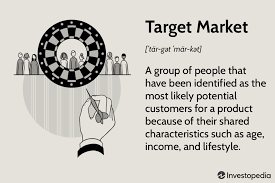

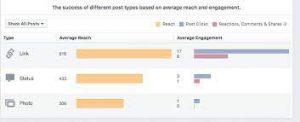
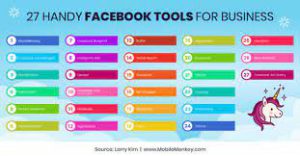

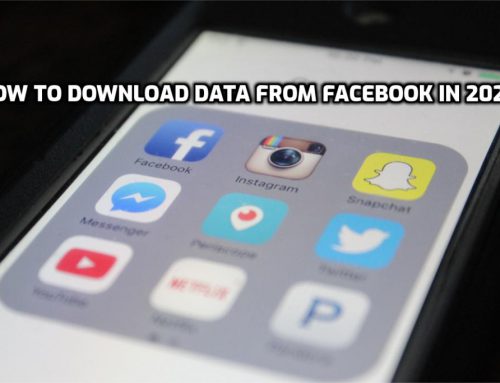

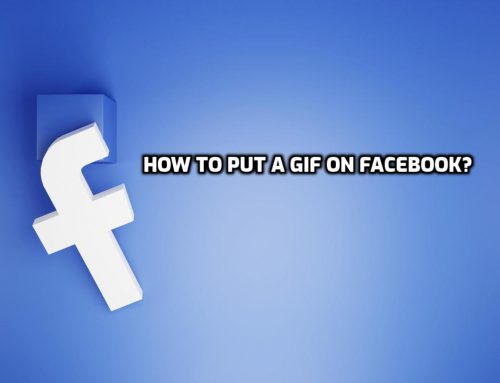
Leave A Comment